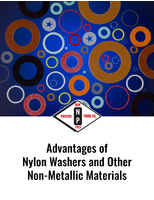Molecular Spectroscopy Standard covers calibration, qualification.
Press Release Summary:
Intended for fluorescence instruments users, ASTM E2719, Guide for Fluorescence-Instrument Calibration and Qualification, summarizes what is available as far as methods and material standards necessary for qualification of fluorometers as part of complying with regulatory and other QA/QC requirements. It also gives general guidelines on sample preparation and handling. While level of detail is geared for non-experts, list of references will help even experts find more information.
Original Press Release:
New ASTM Molecular Spectroscopy Standard Covers Instrument Calibration and Qualification
W. CONSHOHOCKEN, Pa.-There has been a renewed interest in instrumental qualification and standardization by the fluorescence community over the last 10 years, driven by the increasing number of quantitative chemical assays that use fluorescence detection and the presence of regulations in some of these areas. After revising three test methods for fluorescence instruments, stakeholders decided that a standard guide was needed to give general guidelines and recommendations for common fluorescence measurements before writing additional standards, which would be more specific.
The result of this work is a new standard, ASTM E2719, Guide for Fluorescence-Instrument Calibration and Qualification. The new standard was developed by Subcommittee E13.01 on Ultra-Violet, Visible and Luminescence Spectroscopy, part of ASTM International Committee E13 on Molecular Spectroscopy and Separation Science.
According to Paul DeRose, research chemist, National Institute of Standards and Technology, and a member of Committee E13, ASTM E2719 summarizes for users of fluorescence instruments what is presently available as far as methods and material standards necessary for the qualification of fluorometers as part of complying with regulatory and other quality assurance and quality control requirements. In addition, the standard gives general guidelines on sample preparation and handling.
"ASTM E2719 is a one-stop guide for non-experts to find out what standards are available to them for the task they want to accomplish and to help them to decide which of those is most well-suited for their application," says DeRose. "The level of detail in ASTM E2719 is geared for non-experts, but its thorough list of references will enable even experts to find the more detailed information they require."
Now that the need for a general standard has been met with ASTM E2719, E13.01 is looking for participants who can contribute to the ongoing development of the standard as well as to investigate the development of proposed new standards in the areas of spectral correction, relative quantum yields, traceability in fluorescence, and microwell plate and microarray technologies.
To purchase ASTM standards, visit www.astm.org and search by the standard designation number, or contact ASTM Customer Relations (phone: 610-832-9585; service@astm.org). ASTM International welcomes and encourages participation in the development of its standards. For more information on becoming an ASTM member, visit www.astm.org/JOIN.
ASTM International is one of the largest international standards development and delivery systems in the world. ASTM International meets the World Trade Organization (WTO) principles for the development of international standards: coherence, consensus, development dimension, effectiveness, impartiality, openness, relevance and transparency. ASTM standards are accepted and used in research and development, product testing, quality systems and commercial transactions.
View this release on the ASTM Web site at www.astmnewsroom.org.




